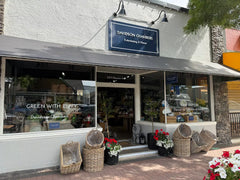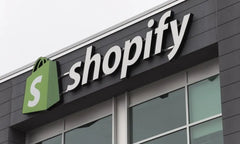
Food Inflation Hits Hard: What Consumers Can Expect This Holiday Season
Table of Contents
- Key Highlights:
- Introduction
- The Current Inflation Landscape
- The Role of Retail Policy and Operational Costs
- Price Increases and Consumer Impact
- Global Factors in Food Inflation
- Retailer Strategies to Mitigate Inflation
- Economic Outlook and Consumer Sentiment
- Addressing Economic Vulnerability
- Conclusion
Key Highlights:
- Food inflation in the UK is projected to reach as high as 6% by the end of the year, exacerbated by government tax policies and rising operational costs for retailers.
- Essential items like meat, poultry, and tea have seen some of the steepest price increases, driven by global demand and supply chain disruptions.
- A significant portion of retailers are preparing to raise prices further, with many already indicating a hiring freeze in response to the financial pressures.
Introduction
As the holiday season approaches, UK consumers are bracing themselves for a potentially costly festive shopping experience, driven primarily by rising food inflation. Economic forecasts warn that grocery prices could soar by as much as 6% before the year concludes, according to industry experts. This wave of inflation is not merely a passing phase but is linked to a confluence of factors—governmental policy changes, unpredictable global market dynamics, and escalating operational costs for retailers.
The British Retail Consortium (BRC) has been vocal about the impact these conditions will have on families, especially those already facing financial strain. For many households, the prospect of having to spend more on everyday essentials will necessitate tough budgeting decisions—particularly as indicators suggest that price hikes could extend beyond food items to include other critical consumer goods. As the festive period draws near, understanding the nuances behind these inflationary trends is crucial for consumers looking to navigate this challenging economic landscape.
The Current Inflation Landscape
At present, the inflation rate in the UK stands at around 3.5%, as reported by the Bank of England. However, leading economists forecast that increasing food prices may push this figure closer to 4% in the near future. The prediction comes on the heels of the Bank's decision to implement a fifth cut in interest rates within the year, aimed at stimulating economic growth amid sluggish consumer confidence.
This uptick in food inflation can largely be attributed to several overarching economic policies and shifts. The Labour government's proposed tax rises, particularly concerning employer national insurance contributions, exert extra pressure on businesses already struggling with tight profit margins. These costs are inevitably transferred to consumers in the form of higher prices.
The Role of Retail Policy and Operational Costs
A critical contribution to the inflationary trend stems from various government policies that have raised operational costs for retailers significantly. The British Retail Consortium estimates that the recent changes to national living wage regulations and the introduction of new packaging taxes have collectively added about £7 billion in costs to the retail sector this year alone. This financial burden is forcing retailers to either absorb these costs—an increasingly untenable position—or relay the inflation down to consumers.
Helen Dickinson, chief executive of the BRC, has highlighted that if the forthcoming Autumn Budget primarily targets retailers, it will adversely affect consumers, especially those from lower-income backgrounds. With retailers already operating on thin margins, any additional tax burden may compel them to raise prices further, affecting affordability for everyday shoppers.
Price Increases and Consumer Impact
Shoppers can expect to see the effects of food inflation most acutely on staple items. Recent reports indicate that meat, poultry, and tea prices have surged rapidly this year. This delineation of rising prices can be traced back to global factors such as high demand volatilized alongside crop issues caused by unpredictable weather patterns and logistical bottlenecks, which have steadily aggravated supply chains.
In a survey conducted of retail finance chiefs representing over 9,000 stores, roughly two-thirds predicted they would need to impose further price increases before the end of the year. Of those surveyed, an astonishing 85% confirmed they had already raised their prices, while 42% admitted to implementing a hiring freeze in response to their existing financial pressures.
Shoppers, particularly those with family commitments during the holiday season, should prepare for these price escalations. The anticipated strain on household budgets will compound existing financial pressures, casting a shadow over the seasonal joy that typically characterizes this time of year.
Global Factors in Food Inflation
The price of numerous food items reflects international market dynamics rather than simply domestic policies. Global events substantially influence local stability. For instance, agricultural yields can fluctuate drastically based on climate events, such as droughts or floods, which are becoming more prevalent due to climate change. This phenomenon disrupts food supply chains, inevitably leading to price adjustments.
The surge in prices for tea, specifically, has been influenced by a combination of high demand from major markets, particularly in Asia and Africa, and logistical challenges stemming from shipping delays and rising freight charges. As these overarching global issues persist, UK consumers should remain cognizant that their local prices are often a reflection of a far broader economic picture that is outside of their control.
Retailer Strategies to Mitigate Inflation
Faced with the likelihood of sustained inflation, many retailers are adopting various strategies to mitigate the effects of rising costs on consumers. Some are seeking to enhance the efficiency of their supply chains to reduce logistical costs, thereby allowing them to maintain more stable pricing structures. Others are focusing on increasing their private-label offerings, which typically carry a lower price point compared to branded goods, thereby providing consumers with more economical choices.
Additionally, promotions and loyalty rewards aimed at driving sales and retaining customer loyalty are becoming increasingly prevalent. As competition remains fierce in the retail landscape, businesses are prioritizing customer engagement, viewing it as essential for sustaining sales despite inflationary pressures.
Economic Outlook and Consumer Sentiment
With inflation expected to rise, the outlook for consumer spending is uncertain. Experts suggest that the need to prioritize essential spending may lead to a decrease in discretionary expenditures. Consequently, businesses may experience a shift in purchasing behavior, prompting a reassessment of marketing strategies to align with evolving consumer priorities.
Many economists believe the rise in food prices—and inflation overall—will drive consumers to seek out more cost-effective shopping venues. Discount retailers and budget chains are likely to benefit as price-conscious consumers adjust their shopping habits amidst economic uncertainties. As families seek to stretch their budgets further this holiday season, understanding the forces at play will be crucial in making informed purchasing decisions.
Addressing Economic Vulnerability
While inflation affects every consumer, its repercussions are disproportionate for low-income families who spend a larger percentage of their income on essential goods. Cautionary measures must be taken to ensure these vulnerable groups are protected during this time of economic instability. Specific initiatives, such as government subsidies or incentives for retailers to maintain prices on staple goods, could relieve some pressure.
Retailers also play a critical role by prioritizing affordability in their product offerings. By emphasizing value and accessibility, supermarkets and food chains can support families in navigating rising costs, ensuring no one is left behind during the festive season.
Conclusion
As food prices continue their relentless ascent, UK consumers must prepare for a challenging holiday shopping season. The combined impact of government policies, global supply chain dynamics, and retailers' operational costs has paved the way for a confluence of economic pressures that will shape purchasing behavior for many households. Understanding these factors is essential for consumers in making informed choices as they adjust to the new economic reality of increased food inflation.
FAQ
Why Will Food Inflation Reach 6% by the End of the Year?
Industry analysts project that various factors, including government tax increases and rising operational costs for retailers, will culminate in an increase in food inflation by the year’s end.
How Are Rising Food Prices Affecting Consumers?
Rising food prices disproportionately impact lower-income families, who allocate a larger share of their budgets to essential goods. As a result, many consumers will face tough financial decisions while shopping during the holiday season.
What Types of Food Items Are Seeing the Highest Price Increases?
Essential food items such as meat, poultry, and tea have witnessed some of the most significant price increases due to global demand, supply chain disruptions, and governmental tax changes.
What Strategies Are Retailers Using to Cope with Inflation?
Retailers are adopting strategies such as enhancing supply chain efficiency, increasing private-label offerings, and implementing promotions to better align with evolving consumer spending habits and mitigate price increases.
What Should Consumers Do to Prepare for the Holidays in Light of Inflation?
Consumers should budget carefully, seek out affordable shopping venues, and prioritize essential items to manage increased grocery expenses during the festive season.
Power your ecommerce with our weekly insights and updates!
Bleibe auf dem Laufenden über das, was in der Handelswelt passiert
E-Mail-Adresse
Für Sie ausgewählt

08 August 2025 / Blog
Davidson Chambers: Revolutionizing Home Entertaining with a Boutique Touch
Mehr erfahren
08 August 2025 / Blog


